The former Pakistan President and Army Chief, who died on Sunday, is remembered in India as the architect of both the Kargil war, and of the “Musharraf Formula” to resolve the Kashmir dispute
Former Pakistan President and Army Chief General (Retd) Pervez Musharraf, who proposed what he entitled the “Musharraf formula” to resolve the Jammu-Kashmir dispute between India and Pakistan, passed away in Dubai on February 5, five years after he was diagnosed with a rare condition called amyloidosis, former spokesperson and close aide Raza Bokhari told The Hindu.
Musharraf had been living in the UAE for more than six years, in virtual exile after a Pakistani court framed charges of treason against him for his imposition of emergency in 2007 during his tenure as leader of Pakistan; a tenure that lasted from 1999, when he came to power in a military coup, only to resign in disgrace in 2008. His family plans to take him back home for his final journey, and his funeral will be held in Karachi on February 7.
Born in Delhi in 1943, Musharraf moved to Pakistan as a child with his parents during Partition. He was educated in Karachi, and then in Turkey, where his father was a diplomat posted to Ankara. Musharraf often spoke of his admiration for Mustapha Kemal Ataturk, the military leader who modernised and secularised Turkey. As a result, when he first took power in Pakistan in 1999, he set up a cabinet of technocrats, attempted modernising the education system, and brought an ordinance meant to bring about media reform.
After graduating from the Pakistan military academy in Quetta in 1964, Musharraf was commissioned into the Artillery Regiment of the Pakistan Army. He saw several conflicts with India, including the wars in 1965 and 1971, the Siachen conflict in 1984 and the Kargil conflict in 1998 when he was chief of the Army. Many analysts pointed out that Musharraf’s antagonism to India came from those wars, but also from a desire to outrun his origins as a Mohajir (refugee from India). His mother Begum Zarine, who was educated at the Aligarh Women’s College and at Delhi University’s Indraprastha College, revisited India when Musharraf was president, returning to an emotional welcome here.
In pictures | Pervez Musharraf — Pakistan’s last military ruler
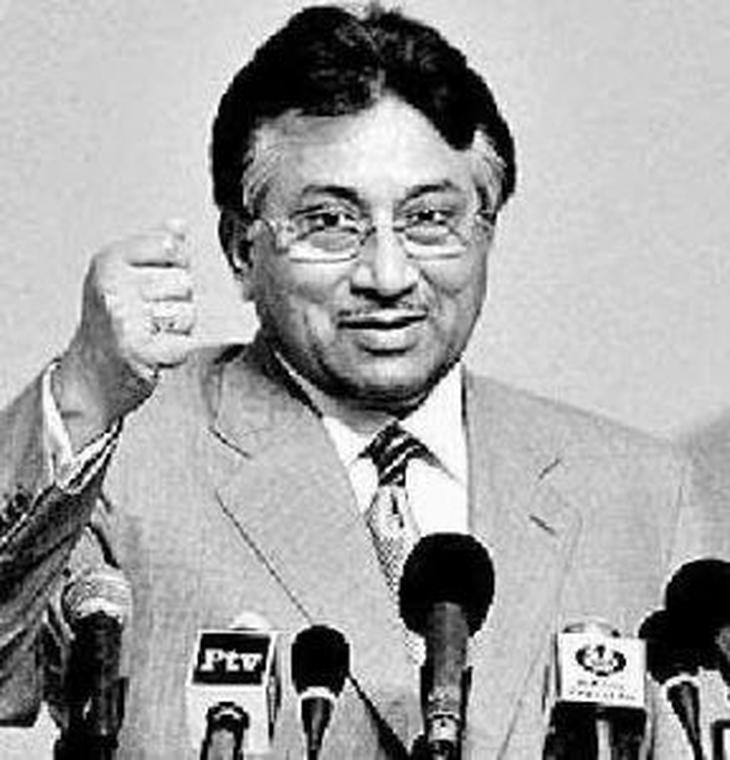
Born on August 11, 1943, in New Delhi, Pervez Musharraf was the son of a diplomat. His family moved to Karachi in 1947, joining millions of other Muslims in fleeing westward.
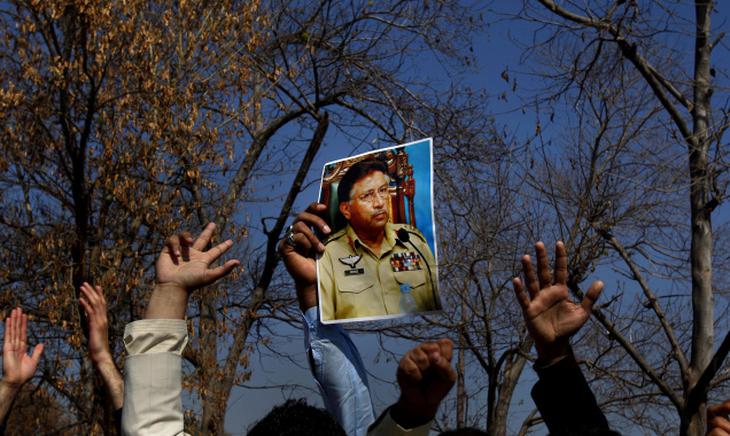
He joined the Pakistan Army in 1964 at age 18 and was a graduate of the Army Staff and Command College, Quetta. Musharraf assumed the post of Chief Executive after imposing martial law in the country in 1999.
Musharraf seized the presidential office in 2001, shoring his power up in a 2002 referendum questioned by opponents. But he reneged on promises to quit as army chief until late 2007. He served as the President of Pakistan from 2001 to 2008.
He aligned with the United States after the 9/11 attacks, earning international praise for trying to tackle Taliban and al-Qaeda militants. In more than seven years in office, Musharraf oversaw a stint of economic growth while dodging at least three assassination attempts.
Militant anger toward Musharraf increased in 2007 when he ordered a raid against the Red Mosque in downtown Islamabad. It had become a sanctuary for militants opposed to Pakistan’s support of the Afghan war. The weeklong operation killed over 100 people. The incident severely damaged Musharraf’s reputation among everyday citizens. Fearing the judiciary would block his continued rule, Musharraf fired the chief justice of Pakistan’s Supreme Court.
Under pressure at home and abroad to restore civilian rule, Musharraf stepped down as Army chief. Though he won another five-year presidential term, Musharraf faced a major crisis following former PM Benazir Bhutto’s assassination in December 2007 at a campaign rally as she sought to become Prime Minister for the third time. In the picture, Musharraf (L) glares at supporters of slain former premier Benazir Bhutto who were shouting slogans “Bhutto is alive” as newly elected Prime Minister Yousuf Raza Gilani (R) looks on after taking oath at the presidential palace in Islamabad on March 25, 2008.
The public suspected Musharraf’s hand in the killing, which he denied. A United Nations report later acknowledged the Pakistani Taliban was a main suspect in her slaying but warned that elements of Pakistan’s intelligence services may have been involved. Musharraf resigned as president in August 2008 after ruling coalition officials threatened to have him impeached for imposing emergency rule and firing judges.
Musharraf’s plan to return to power in 2013 was dashed when he was disqualified from running in an election won by Nawaz Sharif — the man he deposed in 1999. He lived in self-imposed exile in Dubai to avoid criminal charges. Supporters of Musharraf hold his posters as they shout slogans during a rally outside his farmhouse in Islamabad on April 18, 2014.
In October 2010, Musharraf launched his own party, the All Pakistan Muslim League (APML). The party, however, failed to pick up steam, winning just one Parliamentary seat in the 2013 elections and none in 2018.
In 2016 a travel ban was lifted and Musharraf flew to Dubai to seek medical treatment. Three years later, he was sentenced to death in absentia for treason, related to his 2007 decision to impose emergency rule. However, a court later nullified the ruling. Musharraf’s family announced in June 2022 that he had been hospitalised for weeks while suffering from amyloidosis, an incurable condition that sees proteins build up in the body’s organs.
Less than three years after the Kargil conflict, Musharraf surprised many when he reached out to former Prime Minister Atal Bihari Vajpayee for a handshake after addressing delegates at the 11th South Asian Association for Regional Cooperation (SAARC) Summit on January 5, 2002, in Kathmandu.
On April 17, 2005, Musharraf met former Prime Minister Manmohan Singh at the Cricket Summit in New Delhi when the Pakistani Cricket Team visited to play a test and ODI series with India. It was on the sidelines of this summit when the two leaders reportedly reached some kind of a resolution on Kashmir. It is believed that among Pakistani leaders, Musharraf came the closest to reaching a solution with India on the Kashmir issue, despite playing a key role in triggering the Kargil conflict. His administration held backchannel talks with both Vajpayee’s and Manmohan Singh’s Governments.
Former U.S. President George W. Bush meets Musharraf in the White House on December 4, 2004. Musharraf managed to lobby Mr. Bush, who often described the former as an ally and as a leader who was “strong in the war on terror”. The late leader convinced Mr. Bush to pour funds into Pakistan’s military, while it was publicly unambiguous that Pakistan’s intelligence was cutting deals with the likes of the Taliban and helping strengthen insurgency against U.S. troops in Afghanistan.
1/13
Widespread allegations
General Musharraf was handpicked to become Pakistan Army Chief by PM Nawaz Sharif, who promoted him over his seniors in 1998, believing that he would be less ambitious than former Pakistani military dictator General Zia-ul-Haq. However, within a year, their relations had soured, and after his flight from Sri Lanka was dramatically re-routed on Mr. Sharif’s orders, General Musharraf landed in Rawalpindi and proceeded to wrest power from the Prime Minister in a military coup.
Apart from the suspension of democracy, Musharraf faced many other controversies during his tenure. He was alleged to have brought false cases against the entire Pakistani political leadership, including Benazir Bhutto, Nawaz Sharif and Imran Khan, and to have unconstitutionally dismissed the Chief Justice of Pakistan Ifthikar Chaudhury and about 100 other judges. Other allegations were that Musharraf orchestrated the “disappearance” of hundreds of activists and fighters; killed Baloch leader Akbar Bugti using a drone, as part of a brutal crackdown on the insurgent movement in Balochistan; allowed the U.S. to use Pakistani bases to bomb thousands in Pushtun areas during the ‘War against Terror’; and conspired to destroy evidence in the Benazir Bhutto assassination trial, where he was declared a fugitive by the court.
General Musharraf had defended his actions, claiming that he had fought corruption, “restored” grassroots democracy, and eventually held general elections in 2008, months before he was forced to step down.
Mixed legacy
In India, the General’s legacy is particularly mixed. He is remembered as the architect of the Kargil war, who sent Pakistan Army-trained militants to capture Indian posts along the Line of Control (LoC) in 1998. But he is also remembered for the “Musharraf Formula” that he claimed to have proposed in talks with Prime Minister Manmohan Singh, Which was taken forward during back-channel talks between 2002 and 2007. The plan involved working towards a non-territorial resolution to the dispute, which would allow greater movement across the LoC, but it was not carried forward by subsequent governments.
“Musharraf’s legacy vis-a-vis India is that he stands doubly condemned in Pakistan: for his disastrous adventurism on Kargil and then for his defeatism by unilaterally accepting that the onus for restraining terrorism lay with Pakistan,“ said former High Commissioner to Pakistan T.C.A. Raghavan.
Complicit in terror
But Musharraf was also seen as the man in charge of Pakistan who was complicit or turned a blind eye through a series of major terror attacks in India carried out by the Jaish-e-Mohammad and the Lashkar-e-Taiba (LeT). They include the hijacking of IC-814 in 1999, and the Parliament attack and bombing of the Jammu and Kashmir Legislature, both in 2000 bombing. General Musharraf had resigned and left his country in August 2008, a few months before the 26/11 Mumbai attacks, but it was during his tenure that the conspiracy behind those attacks would have been made in Pakistan, where the LeT operated training camps.
In 2010, Musharraf tried his hand at politics, launching the All Pakistan Muslim League, but his plans crashed after he was handed a lifetime ban on contesting elections by a court. “At a personal level, he was never comfortable to live in self-imposed exile, but he [saw it] as another way to serve the people of Pakistan,” Mr. Bokhari said, explaining his decision to live abroad, ostensibly to avoid arrest.
After he moved to Dubai in 2016, the former leader was admitted to hospital after a collapse. In 2018, he was diagnosed with amyloidosis, a rare protein-linked disease, at the Royal Brompton Hospital in London. By June 2022, his family said in a statement that “recovery is not possible” and that his organs were malfunctioning. He passed away in Dubai on Sunday at the age of 79.
Obituary | Pervez Musharraf, a Pakistani President with a mixed legacy
The former Pakistan President and Army Chief, who died on Sunday, is remembered in India as the architect of both the Kargil war, and of the “Musharraf Formula” to resolve the Kashmir dispute
Former Pakistan President and Army Chief General (Retd) Pervez Musharraf, who proposed what he entitled the “Musharraf formula” to resolve the Jammu-Kashmir dispute between India and Pakistan, passed away in Dubai on February 5, five years after he was diagnosed with a rare condition called amyloidosis, former spokesperson and close aide Raza Bokhari told The Hindu.
Musharraf had been living in the UAE for more than six years, in virtual exile after a Pakistani court framed charges of treason against him for his imposition of emergency in 2007 during his tenure as leader of Pakistan; a tenure that lasted from 1999, when he came to power in a military coup, only to resign in disgrace in 2008. His family plans to take him back home for his final journey, and his funeral will be held in Karachi on February 7.
Born in Delhi in 1943, Musharraf moved to Pakistan as a child with his parents during Partition. He was educated in Karachi, and then in Turkey, where his father was a diplomat posted to Ankara. Musharraf often spoke of his admiration for Mustapha Kemal Ataturk, the military leader who modernised and secularised Turkey. As a result, when he first took power in Pakistan in 1999, he set up a cabinet of technocrats, attempted modernising the education system, and brought an ordinance meant to bring about media reform.
After graduating from the Pakistan military academy in Quetta in 1964, Musharraf was commissioned into the Artillery Regiment of the Pakistan Army. He saw several conflicts with India, including the wars in 1965 and 1971, the Siachen conflict in 1984 and the Kargil conflict in 1998 when he was chief of the Army. Many analysts pointed out that Musharraf’s antagonism to India came from those wars, but also from a desire to outrun his origins as a Mohajir (refugee from India). His mother Begum Zarine, who was educated at the Aligarh Women’s College and at Delhi University’s Indraprastha College, revisited India when Musharraf was president, returning to an emotional welcome here.
In pictures | Pervez Musharraf — Pakistan’s last military ruler

Born on August 11, 1943, in New Delhi, Pervez Musharraf was the son of a diplomat. His family moved to Karachi in 1947, joining millions of other Muslims in fleeing westward.

He joined the Pakistan Army in 1964 at age 18 and was a graduate of the Army Staff and Command College, Quetta. Musharraf assumed the post of Chief Executive after imposing martial law in the country in 1999.
Musharraf seized the presidential office in 2001, shoring his power up in a 2002 referendum questioned by opponents. But he reneged on promises to quit as army chief until late 2007. He served as the President of Pakistan from 2001 to 2008.
He aligned with the United States after the 9/11 attacks, earning international praise for trying to tackle Taliban and al-Qaeda militants. In more than seven years in office, Musharraf oversaw a stint of economic growth while dodging at least three assassination attempts.
Militant anger toward Musharraf increased in 2007 when he ordered a raid against the Red Mosque in downtown Islamabad. It had become a sanctuary for militants opposed to Pakistan’s support of the Afghan war. The weeklong operation killed over 100 people. The incident severely damaged Musharraf’s reputation among everyday citizens. Fearing the judiciary would block his continued rule, Musharraf fired the chief justice of Pakistan’s Supreme Court.
Under pressure at home and abroad to restore civilian rule, Musharraf stepped down as Army chief. Though he won another five-year presidential term, Musharraf faced a major crisis following former PM Benazir Bhutto’s assassination in December 2007 at a campaign rally as she sought to become Prime Minister for the third time. In the picture, Musharraf (L) glares at supporters of slain former premier Benazir Bhutto who were shouting slogans “Bhutto is alive” as newly elected Prime Minister Yousuf Raza Gilani (R) looks on after taking oath at the presidential palace in Islamabad on March 25, 2008.
The public suspected Musharraf’s hand in the killing, which he denied. A United Nations report later acknowledged the Pakistani Taliban was a main suspect in her slaying but warned that elements of Pakistan’s intelligence services may have been involved. Musharraf resigned as president in August 2008 after ruling coalition officials threatened to have him impeached for imposing emergency rule and firing judges.
Musharraf’s plan to return to power in 2013 was dashed when he was disqualified from running in an election won by Nawaz Sharif — the man he deposed in 1999. He lived in self-imposed exile in Dubai to avoid criminal charges. Supporters of Musharraf hold his posters as they shout slogans during a rally outside his farmhouse in Islamabad on April 18, 2014.
In October 2010, Musharraf launched his own party, the All Pakistan Muslim League (APML). The party, however, failed to pick up steam, winning just one Parliamentary seat in the 2013 elections and none in 2018.
In 2016 a travel ban was lifted and Musharraf flew to Dubai to seek medical treatment. Three years later, he was sentenced to death in absentia for treason, related to his 2007 decision to impose emergency rule. However, a court later nullified the ruling. Musharraf’s family announced in June 2022 that he had been hospitalised for weeks while suffering from amyloidosis, an incurable condition that sees proteins build up in the body’s organs.
Less than three years after the Kargil conflict, Musharraf surprised many when he reached out to former Prime Minister Atal Bihari Vajpayee for a handshake after addressing delegates at the 11th South Asian Association for Regional Cooperation (SAARC) Summit on January 5, 2002, in Kathmandu.
On April 17, 2005, Musharraf met former Prime Minister Manmohan Singh at the Cricket Summit in New Delhi when the Pakistani Cricket Team visited to play a test and ODI series with India. It was on the sidelines of this summit when the two leaders reportedly reached some kind of a resolution on Kashmir. It is believed that among Pakistani leaders, Musharraf came the closest to reaching a solution with India on the Kashmir issue, despite playing a key role in triggering the Kargil conflict. His administration held backchannel talks with both Vajpayee’s and Manmohan Singh’s Governments.
Former U.S. President George W. Bush meets Musharraf in the White House on December 4, 2004. Musharraf managed to lobby Mr. Bush, who often described the former as an ally and as a leader who was “strong in the war on terror”. The late leader convinced Mr. Bush to pour funds into Pakistan’s military, while it was publicly unambiguous that Pakistan’s intelligence was cutting deals with the likes of the Taliban and helping strengthen insurgency against U.S. troops in Afghanistan.
1/13
Widespread allegations
General Musharraf was handpicked to become Pakistan Army Chief by PM Nawaz Sharif, who promoted him over his seniors in 1998, believing that he would be less ambitious than former Pakistani military dictator General Zia-ul-Haq. However, within a year, their relations had soured, and after his flight from Sri Lanka was dramatically re-routed on Mr. Sharif’s orders, General Musharraf landed in Rawalpindi and proceeded to wrest power from the Prime Minister in a military coup.
Apart from the suspension of democracy, Musharraf faced many other controversies during his tenure. He was alleged to have brought false cases against the entire Pakistani political leadership, including Benazir Bhutto, Nawaz Sharif and Imran Khan, and to have unconstitutionally dismissed the Chief Justice of Pakistan Ifthikar Chaudhury and about 100 other judges. Other allegations were that Musharraf orchestrated the “disappearance” of hundreds of activists and fighters; killed Baloch leader Akbar Bugti using a drone, as part of a brutal crackdown on the insurgent movement in Balochistan; allowed the U.S. to use Pakistani bases to bomb thousands in Pushtun areas during the ‘War against Terror’; and conspired to destroy evidence in the Benazir Bhutto assassination trial, where he was declared a fugitive by the court.
General Musharraf had defended his actions, claiming that he had fought corruption, “restored” grassroots democracy, and eventually held general elections in 2008, months before he was forced to step down.
Mixed legacy
In India, the General’s legacy is particularly mixed. He is remembered as the architect of the Kargil war, who sent Pakistan Army-trained militants to capture Indian posts along the Line of Control (LoC) in 1998. But he is also remembered for the “Musharraf Formula” that he claimed to have proposed in talks with Prime Minister Manmohan Singh, Which was taken forward during back-channel talks between 2002 and 2007. The plan involved working towards a non-territorial resolution to the dispute, which would allow greater movement across the LoC, but it was not carried forward by subsequent governments.
“Musharraf’s legacy vis-a-vis India is that he stands doubly condemned in Pakistan: for his disastrous adventurism on Kargil and then for his defeatism by unilaterally accepting that the onus for restraining terrorism lay with Pakistan,“ said former High Commissioner to Pakistan T.C.A. Raghavan.
Complicit in terror
But Musharraf was also seen as the man in charge of Pakistan who was complicit or turned a blind eye through a series of major terror attacks in India carried out by the Jaish-e-Mohammad and the Lashkar-e-Taiba (LeT). They include the hijacking of IC-814 in 1999, and the Parliament attack and bombing of the Jammu and Kashmir Legislature, both in 2000 bombing. General Musharraf had resigned and left his country in August 2008, a few months before the 26/11 Mumbai attacks, but it was during his tenure that the conspiracy behind those attacks would have been made in Pakistan, where the LeT operated training camps.
In 2010, Musharraf tried his hand at politics, launching the All Pakistan Muslim League, but his plans crashed after he was handed a lifetime ban on contesting elections by a court. “At a personal level, he was never comfortable to live in self-imposed exile, but he [saw it] as another way to serve the people of Pakistan,” Mr. Bokhari said, explaining his decision to live abroad, ostensibly to avoid arrest.
After he moved to Dubai in 2016, the former leader was admitted to hospital after a collapse. In 2018, he was diagnosed with amyloidosis, a rare protein-linked disease, at the Royal Brompton Hospital in London. By June 2022, his family said in a statement that “recovery is not possible” and that his organs were malfunctioning. He passed away in Dubai on Sunday at the age of 79.


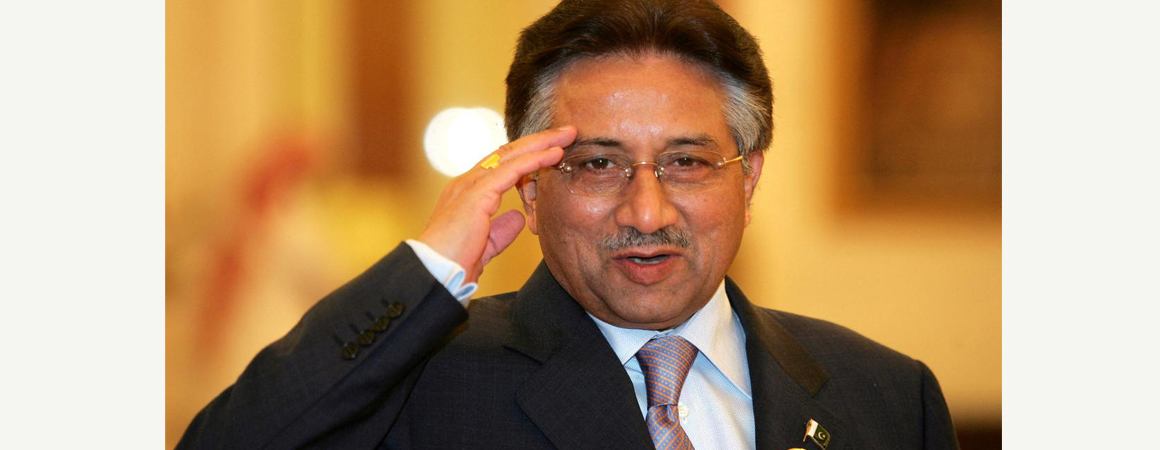
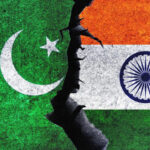
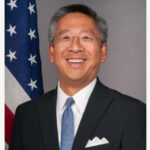
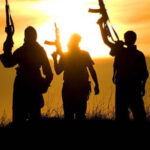
NO COMMENT